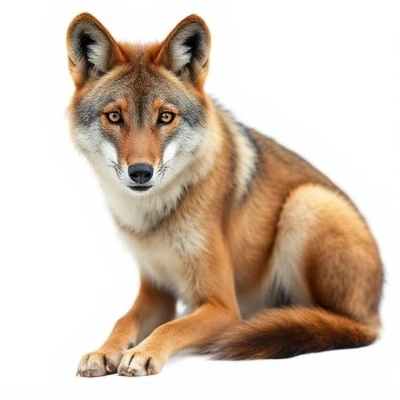
The Abyssinian Wolf (Canis simensis) is a rare and remarkable canid, native to the highlands of Ethiopia. With its distinctive coat and unique habits, it stands out from other members of the canid family.
The Abyssinian Wolf is a medium-sized canid, measuring approximately 60 cm at the withers and weighing between 11 and 19 kg. It has a reddish coat with distinctive white markings on the throat and chest. Its bushy tail and elongated muzzle give it an elegant and agile appearance.
The Abyssinian Wolf (Canis simensis) belongs to the Canidae family.
This wolf is the only member of the genus Canis to live exclusively in Africa, and it is closely related to other canids such as the gray wolf and the jackal, but it has unique characteristics.
The Abyssinian Wolf primarily inhabits the highlands of Ethiopia, at altitudes between 3,000 and 4,500 meters. It prefers alpine meadows and heathlands, where it can hunt rodents and other small mammals.
The Abyssinian Wolf is a social animal that lives in small family packs. These packs typically consist of a breeding pair and their offspring. They are territorial and mark their territory with vocalizations and scent markings.
The Abyssinian Wolf is a specialized carnivore, primarily feeding on rodents, particularly the giant mole-rat. It supplements its diet with other small mammals, birds, and occasionally carrion.
The Abyssinian Wolf is classified as endangered by the IUCN due to the loss of its natural habitat and the reduction of its prey. The conversion of land for agriculture and overgrazing are the main threats to this species. Conservation efforts are underway to protect the areas where it lives and to raise awareness among local communities about the importance of its conservation.
The Abyssinian Wolf, also known as Canis simensis, belongs to the Canidae family. Its closest genetic cousins include the Gray Wolf (Canis lupus) and the Golden Jackal (Canis aureus). These species share common characteristics, notably their adaptation to various environments and their carnivorous diet.
Observing an Abyssinian Wolf in its natural habitat is a fascinating experience.
By following these tips, you can observe the Abyssinian Wolf while preserving its natural environment.